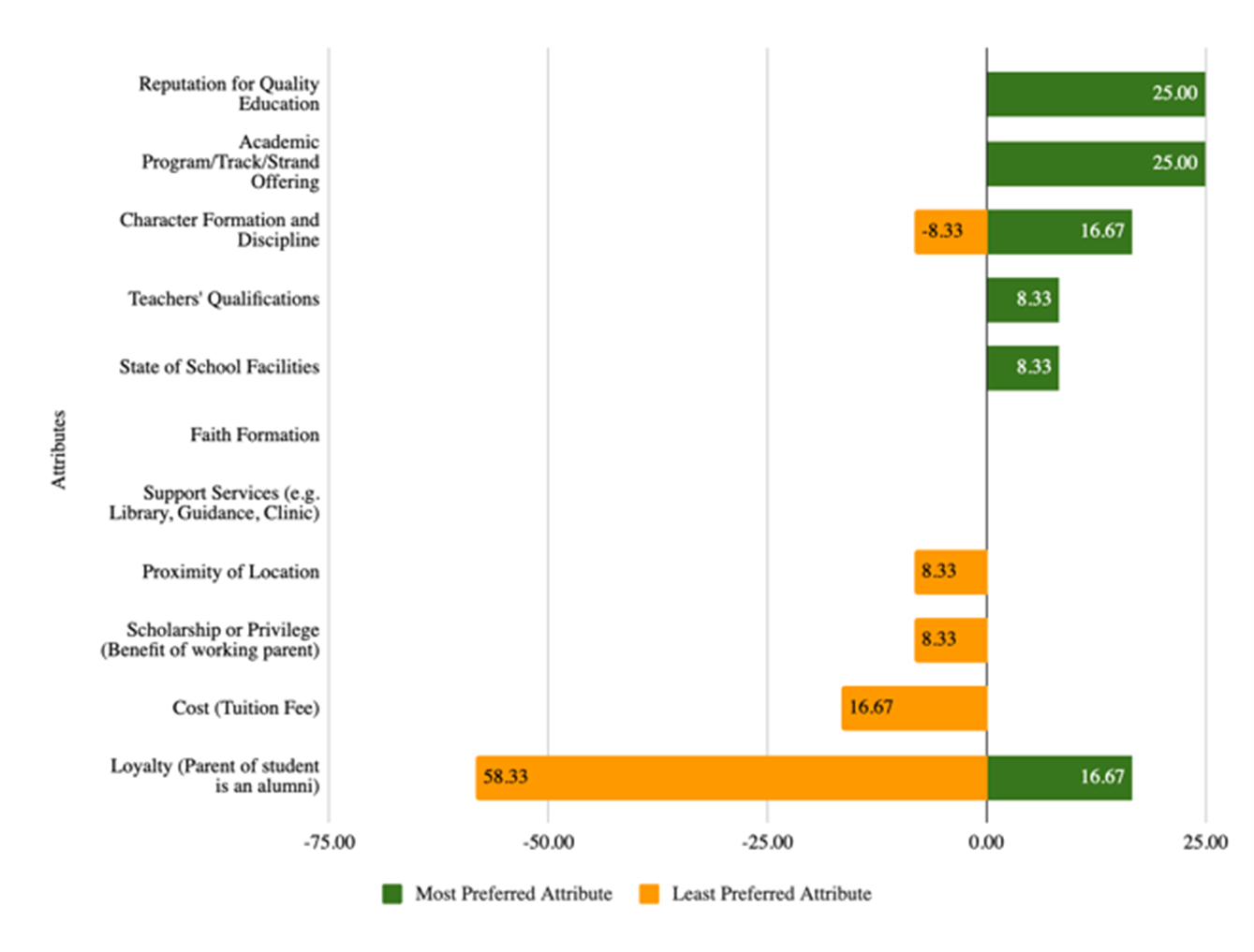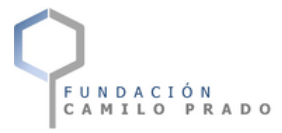Parents preference and willingness to pay for private senior high school education
DOI:
https://doi.org/10.35564/jmbe.2024.0008Keywords:
willingness to pay, parent preference, senior high school education, private education, education, private school viability, Van Westendorp Price Sensitivity Model, MaxDiff AnalysisAbstract
This descriptive research investigates the parents’ preferences when selecting a school for their children and their willingness to pay for a private senior high school education in South Cotabato, Philippines. This study focuses on the preferences influencing parents' decisions to choose private education within the distinct socio-economic context of the research locale. Primary household data were gathered through a survey targeting parents of junior high school students. The study reveals that the predominant demographic seeking private senior high school education in the research setting are clients belonging to the low to upper-middle-income bracket. While these parents prioritize investing in quality education, their spending flexibility is constrained. Consequently, their willingness to pay for a private senior high school education and their school choices are significantly shaped by their income levels, perceptions of an acceptable price point, and the availability of government subsidies. This investigation yields valuable insights into the educational market dynamics which are essential for enhancing the sustainability of private education in the Philippines.
Downloads
References
Aguilar, F. X., & Vlosky, R. P. (2007). Consumer willingness to pay price premiums for environmentally certified wood products in the U.S. Forest. Policy and Economics, 9(8), 1100-1112. https://doi.org/10.1016/j.forpol.2006.12.001
American Psychological Association. (2020). Publication manual of the American Psychological Association (7th ed.). https://apastyle.apa.org/pubmanual/
Brown, C. M., Anderson, D. L., & Schramm, D. G. (2020). Parent preferences for private schools in a choice-based market. Education Finance and Policy, 15(4), 660-688. https://doi.org/10.1162/edfp_a_00305
Chanco, B. (2023, June 9). We're losing private schools. PhilStar Global. https://www.philstar.com/business/2023/06/09/2272433/were-losing-private-schools
Conjointly (2023). Maxdiff analysis. Conjointly. Retrieved from https://conjointly.com/products/maxdiff-analysis/
Cruz, I. (2014, January 9). Why private schools. PhilStar Global. https://www.philstar.com/other-sections/education-and-home/2014/01/09/1276645/why-private-schools
DeAngelis, C. A., & Holmes Erickson, H. (2017). School choice success: Match or merit? SSRN Electronic Journal. https://doi.org/10.2139/ssrn.3045988
Descriptive research: Definition, characteristics, methods, examples and advantages. (2022). QuestionPro. https://www.questionpro.com/blog/descriptive-research/
Franco, A. (2021). How to discover your customers' willingness to pay. Medium. UX Collective. https://uxdesign.cc/how-to-discover-your-customers-willingness-to-pay-9963cb4d455c
Grutters, J.P.C., van Exel, N.J.A., Brouwer, W.B.F., & van den Berg, B. (2008). Willingness to accept versus willingness to pay in a discrete choice experiment. Value in Health, 11(7), 1110-1119. https://doi.org/10.1111/j.1524-4733.2008.00340.x
Holmes Erickson, H. (2017). How do parents choose schools, and what schools do they choose? A literature review of Private School Choice Programs in the United States. Journal of School Choice, 11(4), 491-506. https://doi.org/10.1080/15582159.2017.1395618
House of Representatives, CPBRD. (2022, December). Consumption Patterns Among Filipino Households, 2021. CPBRD. Retrieved from https://cpbrd.congress.gov.ph/publications/FF2022-71%20Consumption%20Patterns%20Among%20Fil%20Households,%202021.pdf
Johnson, B., & Johnson, M. (2019). Examining factors influencing parents' decisions when choosing a private school. International Journal of Educational Leadership Preparation, 14(2), 1-19.
Johnson, R., & Lee, S. (2021). Income profiles and parental school choice: A comparative analysis. Journal of Education and Social Policy, 8(2), 15-32.
Khan, W., Siddiquei, M. I., Muneeb, S. M., & Farhan, M. (2022). Factors affecting willingness to pay premium prices for socially responsible food products: Evidence from Indian consumers. Business and Society Review, 127(2), 423-436.
https://doi.org/10.1111/basr.12270
Luptak, M. (2021). A complete guide to van westendorp + how to graph it in Excel. https://themaykin.com/blog/a-complete-guide-to-van-westendorp-how-to-graph-it-in-excel
Magsambol, B. (2020, July 24). Enrollment in private schools 'alarmingly low' - group. Rappler. https://www.rappler.com/nation/group-says-low-enrollment-turnout-private-school-alarming/
Marasigan, R. M., & Alonzo, A. A. (2018). Education Expenditures of Low-Income Families in the Philippines. International Journal of Research in Social Sciences, 8(1), 153-163.
MaxDiff Scores. (2023). Sawtooth Software. https://sawtoothsoftware.com/help/discover2/analysis/maxdiff/maxdiff-scores#interpreting-scores
McCombes, S. (2022) Descriptive research: Definition, types, methods & examples, Scribbr. https://www.scribbr.com/methodology/descriptive-research/ (Accessed: November 25, 2022).
Orbeta, A., & Paqueo, V. (2022). (rep.). Philippine Education: Situationer, Challenges, and Ways Forward. Philippine Institute for Development Studies.
PEAC (n.d.). (rep). Private Education Assistance Committee Annual Report 2021-2022 (pp. 44-45). Makati City: Private Education Assistance Committee.
Rufino, C. C. (2013). Consumption Pattern of Poor Households in Metro Manila - A Microeconometric Evaluation. De La Salle University. https://www.dlsu.edu.ph/wp-content/uploads/2019/10/2rufino-051413.pdf
Shaddix, R. S. (2023). How to price your product: A guide to the van westendorp pricing model. Forbes. https://www.forbes.com/sites/rebeccasadwick/2020/06/22/how-to-price-products/?sh=49fe8ed155c7
Smith, A. B. (2019). Income dynamics and private school enrollment: A longitudinal study. Journal of Education Finance, 44(2), 123-142.
Smith, J. A. (2017). Parental preferences and school choice: Evidence from a randomized lotteries study. Education Economics, 25(1), 63-76.
Smith, R., & Johnson, L. (2021). Exploring parental decision-making in school selection: A qualitative study. Journal of Educational Policy, 32(4), 511-529.
Soccsksargen (Region XII) (n.d.) PhilAtlas. https://www.philatlas.com/mindanao/r12.html
Stewart, T., & Wolf, P. (2015). The school choice journey: School vouchers and the empowerment of urban families. Journal of School Choice, 9(2), 315-318. https://doi.org/10.1080/15582159.2015.1032858
Stobierski, T. (2020) Willingness to pay: What it is & how to calculate, Business Insights Blog. https://online.hbs.edu/blog/post/willingness-to-pay
Tian, Q., & Zhang, L. (2020). Exploring the determinants of parents' willingness to pay for shadow education in China. Asia Pacific Education Review, 21(2), 289-303.
Williams, J. (2018). Parental preferences and the importance of school attributes. Educational Studies, 44(2), 199-213.
Willingness to pay: How to influence & calculate WTP (2021) Willingness to Pay: How to Influence & Calculate WTP. Profitwell. https://www.profitwell.com/recur/all/willingness-to-pay/
Why customer preference matters (2022) PossibleNOW. https://resources.possiblenow.com/why-customer-preference-matters/
Yang, H. L., Huang, M. J., & Yeh, R. Y. (2019). Determinants of parents' willingness to pay for private tutoring in Taiwan: Evidence from a national survey. Asia Pacific Education Review, 20(4), 637-651.
Zhang, L., Zhou, Y., & Han, X. (2022). Willingness to pay for private preschool education: Evidence from a contingent valuation study in China. Asia Pacific Journal of Education, 1-18.

Downloads
Published
How to Cite
Issue
Section
License
Copyright (c) 2024 Journal of Management and Business Education

This work is licensed under a Creative Commons Attribution-NonCommercial-ShareAlike 4.0 International License.
License terms at: https://creativecommons.org/licenses/by-nc/4.0/legalcode



